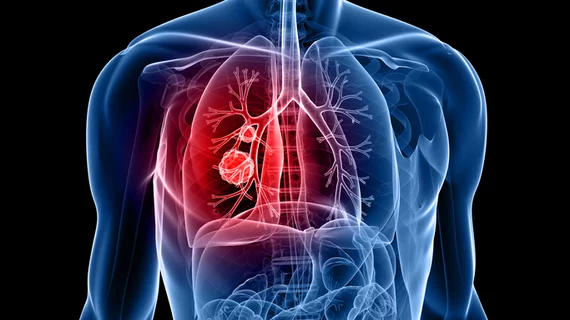Subspecialty radiologists disagree with non-specialists’ incidental nodule guidance in 38% of cases
Thoracic radiologists disagree with non-specialists’ initial incidental nodule recommendations in 38% of cases, resulting in new patient management decisions, according to study results published Thursday.
The recent rise in chest CT utilization has coincided with the detection of more lung nodules, with some estimates suggesting 1.5 million Americans will have one discovered each year. Managing these findings, however, remains difficult, particularly in emergency settings where health concerns are often urgent.
New research shows that even providers trained in radiology have difficulty with these nodules. Fellowship-trained thoracic experts re-reviewed CT exams first assessed in the ED and altered follow-up guidance for more than one-third of patients.
A majority of changes were due to suspicious features, among other factors, and resulted in additional imaging. But Weill Cornell Medicine physicians underscored that high-quality care should always be top priority.
“The ultimate goal is to improve healthcare quality by standardizing patient care, ensuring identification of lung cancers, and reducing unnecessary radiation exposure,” Joanna G. Escalon, MD, with New York-Presbyterian/Weill Cornell, and co-authors wrote in Current Problems in Diagnostic Radiology.
Their findings are based on 468 CT scans completed in a single emergency department between August 2018 and December 2020. Thoracic rads read 40% of cases while non-thoracic providers interpreted 60%. Fellowship-trained thoracic experts re-reviewed 215 cases.
In 62% of instances, thoracic experts agreed with ED physicians’ initial nodule recommendations. The remaining 38% led to a change in management, the authors noted, with an increase in imaging utilization occurring in 67% of these plans. About one-third actually decreased imaging use. Additionally, 11% of disagreed-upon cases resulted in benign nodules.
Escalon and colleagues did not assess whether changes in management led to better care, which they cited as the main limitation of their study.
“Continued research is needed to determine whether the efforts of our radiology consultation service increase patient adherence to nodule follow-up recommendations and whether subspecialty review results in increased or more timely lung cancer detection,” the authors wrote.
They stressed the importance of a culture promoting communication between thoracic specialists and other providers regarding follow-up to help achieve those goals.
Read the full study here.

